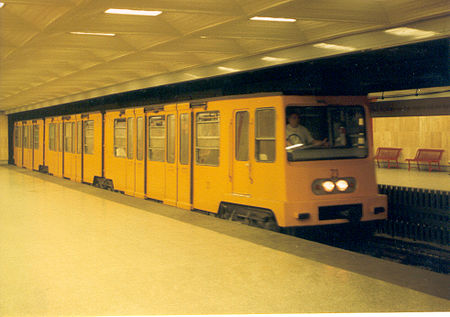Mexikói út metro station

Mexikói út (lit. Mexican street) is the northern terminus of the yellow M1 (Millennium Underground) line of the Budapest Metro. Located in the Zugló district of Pest, the station was opened on 30 December 1973 when the line was extended from the original terminus at Városliget (City Park).Like all Millenium Underground line stations, Mexikói út has two side platforms, one serving each direction of travel. To the north of the station are a pair of sidings and the access to the line's depot, and arriving trains stop to set down passenger at the northbound platform, pull forward into one of the sidings to reverse, and then pick up passengers at the southbound platform. The line's depot lies at ground level to the east of the station, and is accessed by a ramped track from the underground station. The depot also has a track access to the city's tram network.
Excerpt from the Wikipedia article Mexikói út metro station (License: CC BY-SA 3.0, Authors, Images).Mexikói út metro station
Mexikói út, Budapest Herminamező
Geographical coordinates (GPS) Address Nearby Places Show on map
Geographical coordinates (GPS)
| Latitude | Longitude |
|---|---|
| N 47.5194 ° | E 19.0911 ° |
Address
Zöldség-Gyümölcs
Mexikói út
1145 Budapest, Herminamező
Hungary
Open on Google Maps











